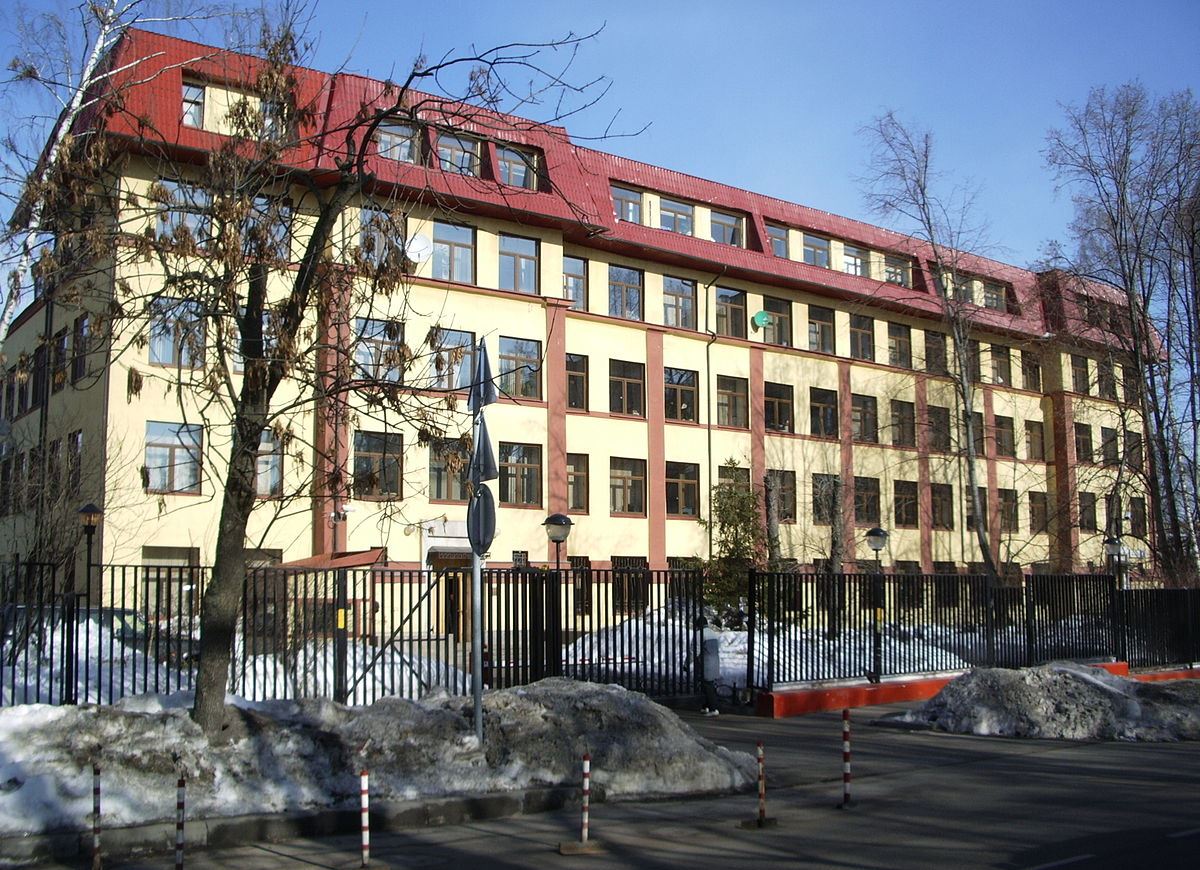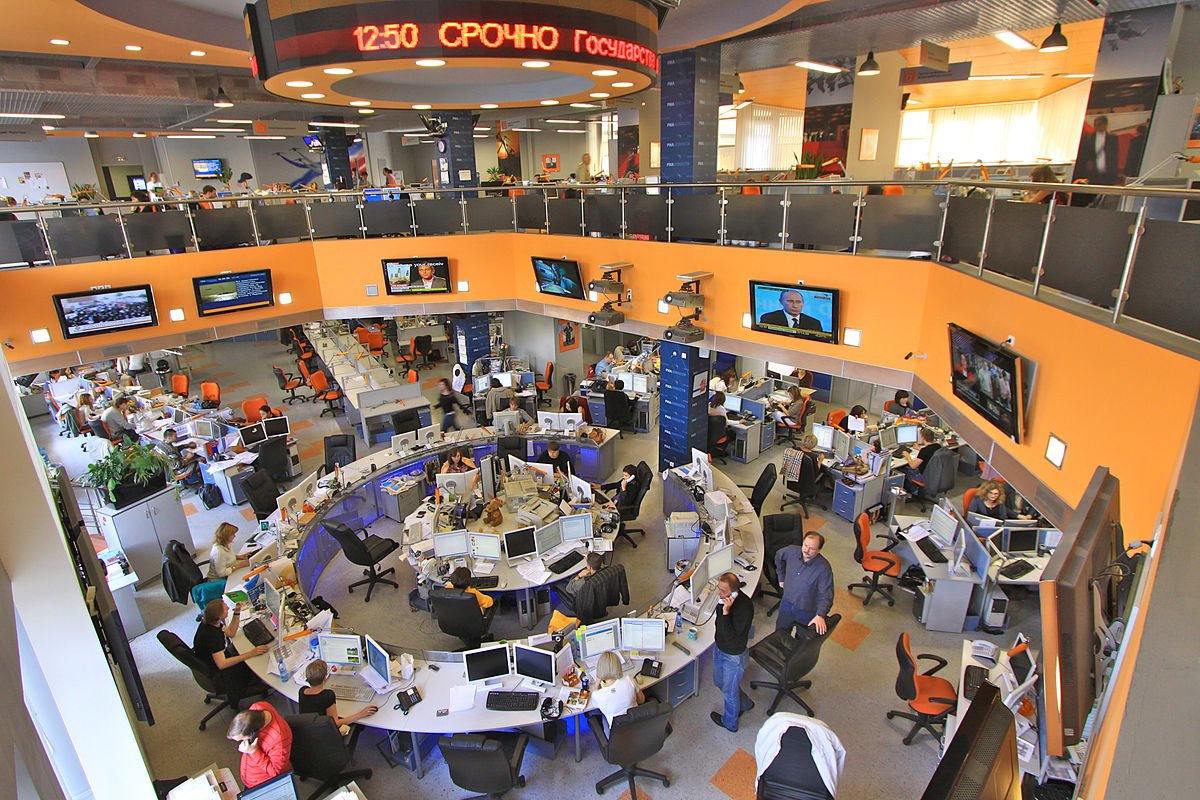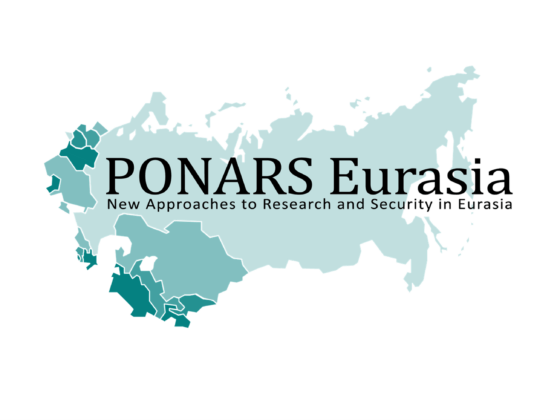
The Kommersant publishing house headquarters in Moscow. (credit)
On May 20, 2019, the entire political desk of the Kommersant publishing house, including myself (deputy chief editor) and special correspondent Anna Pushkarskaya, announced that we had submitted our resignations. This move was our protest against the firing of the deputy head of the political desk Maksim Ivanov and special correspondent Ivan Safronov, which we all regarded as unfair.
The management of the publishing house accused Ivanov and Safronov of violating the editorial standards in an article that claimed that Federation Council Speaker Valentina Matvienko was about to take another job. From a moral standpoint, our decision to collectively quit appeared to be the most obvious thing to do. From the point of view of our career prospects, however, it seemed sheer madness.
In 2019, the Kommersant publishing house was still ranked among the leaders of the Russian media market. Being a Kommersant reporter was a prestigious job. Even though the combination of political pressure and the market demand for qualified journalists has led to a permanent outflow of journalists, it was still compensated by interns—each department had several of them waiting for vacancies to open. Any staff enlargement was out of the question; in fact, rumors had it that cuts were not ruled out. The other members of the “Big Three,” Kommersant, Vedomosti, and RBC, fared no better—actually, the situations there were even worse.
Before we submitted our resignations, my colleagues came to me to discuss their futures. They were certain about quitting but had serious doubts about what lay ahead. For almost all of my younger colleagues, Kommersant was their first job and they had little experience in applying for jobs. However, they were familiar with the experience of colleagues who had lost their jobs and had to wait for a long time for new offers. Yet, there were also instances of qualified journalists who were able to find a new job in almost no time. I tried to focus my colleagues’ attention on the positive employment stories and persuade them that everything was going to be okay. Months later now, it is possible to draw some conclusions.
Nearly everyone who was anxious to find a job found it. And the jobs were not bad. Two of my former colleagues currently work for Vedomosti (Russia’s leading economic publication), two at the news agency Interfax, two for Novaya Gazeta, one for Forbes and another for Team 29, a human rights organization. A couple others are still in the process of negotiating with potential employers. Nobody had to forgo his or her professional interests, some even gained in salary, some lost a bit. My colleagues still miss the time when we all worked together, but nobody ended up jobless. Each of them got at least three or four offers and some even received as many as a dozen.
The Job Market for Journalists Since 2000
The experience of the former staffers of the Kommersant political desk makes it possible to evaluate the current situation of the Russian media job market. Judging by the standards of the 2000s, the high-quality media market is in a catastrophic condition: Journalists are plenty, jobs are scarce. The first factor is the government’s political pressure. It began as far back as the early 2000s with the destruction of the Media-Most holding, and since 2012 has evolved as a frontal attack. For television journalists this meant that they either played by the rules of state-controlled national channels or were barred from television journalism altogether. Some joined the small-scale, privately owned TV Rain, some opted for entertainment television, and others chose to radically change their professional occupations.
After the mass protests in the winter-spring of 2011-12 and the beginning of Vladimir Putin’s third term, the government hardened pressures on radio, print press, and—a new thing—online media. The events that happened to the Rambler media holding, which includes among others online publications such as lenta.ru and gazeta.ru, are graphic illustrations. The new management that took office there in 2013-14 proceeded to reshuffle the staff and subsequently the editorial concepts and contents were changed. Both outlets still maintained high traffic, but they can hardly be referred to as high-quality publications because in essence they traded quality for loyalty. It should be also noted that ej.ru (Ezhednevny zhurnal) and grani.ru were blocked in 2014 and have since remained inaccessible in Russia.
Political pressure has been aggravated by the persistent decline of advertising budgets that began after the financial crisis of 2008. The print press was especially badly affected. In 2008, the Kommersant daily paper had 24 pages, but in 2019 merely 19. There is no reason to expect that the size will increase. Other newspapers have also become thinner.
The advertising crisis has basically destroyed weekly magazines. Over the past decade, news weeklies such as Vlast and Dengi (both belonged to the Kommersant publishing house), Bolshoi Gorod, Russian Newsweek, and Sekret firmy, ceased to exist. Russky reporter is published irregularly. Print versions of Afisha and The New Times also had to be closed. All of this has led to a contraction of the high-quality media job market.
Where to Look for Vacancies?
The above does not mean, however, that journalists who have lost their jobs are doomed to unemployment. The experience of my colleagues from the Kommersant political desk points to several niches. One of them is the realm of public relations jobs, such as in the press-services of government agencies or at state-run companies or with similar departments at NGO or civic organizations (that are tied to the government in one way or another).
Granted, some of these fields are not exactly journalism but rather a combination of media communications with bureaucratic methods. But at least vacancies are available, and it is no minor matter that salaries may be some 30 percent higher than with Kommersant or another nongovernment media holding. It should also be noted that the workload in those agencies and companies is substantially lower than with a media outlet.
Journalists covering politics are not infrequently hired by electoral campaigns that are attracted by their writing skills. The demand is always there, and the payment is generous, especially compared to regular media jobs. Elections offer only temporary employment but if one manages to incorporate oneself with a campaign team, he or she might count on a stable contract. Of course, Russian electoral campaigns commonly follow the pattern shaped a couple decades ago in that they rely on informal and nontransparent payments (“slush funds”). Formal payments are rare, which generates certain risks.
Another potential employer always hunting for new hirees is government news agencies, such as ITAR-TASS or RIA Novosti, as well as media outlets aligned with the state.
Over the past decade, the government has steadily invested in media. While in the early 2000s government media could not compete with private outlets, today they are fully capable of attracting those employed by privately owned publications.
This applies not just to journalists, but also to top managers. Back in 2012, the ITAR-TASS management was replaced. Sergey Mikhailov, the news agency’s new head, undertook to radically reshuffle the team and was looking at Kommersant in search of qualified journalists. The management of RIA Novosti headed by Svetlana Mironuyk joined the competition for journalistic cadre. At that time, ITAR-TASS and RIA-Novosti, through joint efforts, lured over a dozen highly qualified employees from Kommersant, four of them department managers. This effort was facilitated by the fact that after the street protests of 2011-12 , Kommersant’s editorial policy fell under significant pressure.
A journalist willing to broaden his job search can look for employment in the press-services or with the public-relations departments of companies. This is by no means a new phenomenon, such vacancies have always been around. Specialized departments of the Big Three are generally renewed by about half every two or three years. Journalists who have earned a reputation in a particular field and built good connections are often snatched away by some of the same business companies whose activities they used to cover.
In sum, it may be said that while jobs are scarce for reporters who care about journalism and are committed to working for high-quality media, for those who do not mind compromising their principles or professional ambitions, jobs are plenty.

The RIA Novosti Newsroom. (credit)
The Media Job Market in 2019
The 2019 media market scene is complicated and cannot be reduced to just the options of working for (high-quality) media or government media and public relations departments, whether in the government or private sector.
One of the results of the ongoing technological revolution is a rapid destruction of the media monopoly on content production and delivery. In its turn, this significantly affects the media job market. The dynamics outlined below are not necessarily objective analyses but they give a general idea of the developments in the field over the past two decades.
In the late 1990s, only legally registered media outlets were able to get and disseminate information that was of value for consumers. Viewers basically had a choice between reading Kommersant or Izvestia, watching ORT (currently Pervy Kanal) or NTV, picking a radio station of his or her choice, or buying Vlast or Itogi weeklies from newsstands. There were simply no other ways to get relevant news information. Internet publications were only just emerging (polit.ru in 1998; vesti.ru and gazeta.ru in 1999), but they were more like clubs for elite readers than fully fledged media outlets. The most prominent online sources were producing the so-called kompromat (kogot.ru, etc.) and narrow-interest forums.
The production of print media requires a large space for journalist desks equipped with computer networks and other technological tools. Other indispensable production elements include a printing office, contracts with distributors, and advertising (via television). This in itself made launching a new media business a costly and difficult enterprise. Still, new outlets regularly emerged, and the print media market looked not too full.
The general scene remained mostly unchanged until 2004, the main difference being that, first, the choice between national television channels grew mostly meaningless: by the end of Putin’s first term, the Kremlin took under its control all four national channels that offered news coverage, and second, fully fledged online media emerged and sought to play in the same field as the “traditional” media by drawing on fast operations as their obvious advantage.
The consumer, however, generally had more trust in print media while online media was not taken very seriously. Journalists, regardless of the particular publication they worked for, also still had the monopoly of asking questions and publishing answers or the refusals to answer (who and how used this privilege is a different topic).
Having secured full control of the political process and the largest audience media (television), the Kremlin did not seek (except for moments of major crisis) to control the editorial line of nongovernment or nonaligned media. Around the same time, a new practice was introduced: journalistic pools were organized around the most important power institutions, and access to “first-hand” information became restricted to pool members. This practice was used as a still-relatively-soft way to limit editorial policy.
During the same years, the blogosphere began to take shape on the LiveJournal platform. In 2009, the print press began to visibly decline, while online/Internet media was on the rise—for instance, then-president Dmitry Medvedev published his programmatic article “Russia, forward!” in gazeta.ru. As the blogosphere gathered pace, blogs evolved from a fun pastime to a respected occupation. Audiences of the most popular online authors reached the same levels as some of the second-tier print media.
2011-14 marked a breakthrough when practically all print media rushed to develop their own online resources. While online versions of print content were accessible as far back as the early 2000s, it was in the early 2010s that print media staff began to produce original online products and compete for audiences with existing online outlets.
In response to the mass protests of 2011-12, the Russian government stepped up pressure (mostly by indirect, manipulative means) on the nongovernment media that before were relatively free to pursue their own editorial policies. Advanced consumers increasingly relied on the blogosphere for news they could no longer find in the traditional media. The blogosphere was evolving as a comprehensive news source, the obvious downside being exposure to fake news, whether intentional or not.
Journalists were among the pioneers of the blogosphere from the very beginning, but it was in the early 2010s that many of them began to share through new media the information and analyses that could be deemed politically unsafe for publication in the print media where they were employed.
Around the same time, newsmakers themselves were also exploring the blogosphere, seeking to reach out to the broader public (though such attempts were rarely successful). In 2016-17, channels on Telegram dealt a final blow to the mainstream media monopoly on the dissemination of content.
2019: “Supernova Media”
In 2019, those interested in political and social developments and looking for alternative, non-government sources can do without traditional periodicals, whether on paper or online. [According to a very recent detailed study by the Levada center, about one third of Russians watch video bloggers at least once a week; among Russians under 25 years old, this constituency reaches two-thirds. Seven percent watch them daily; among those under 25 this constituency amounts to 19 percent. -Ed.].
All one needs is to customize his or her social networks and “tune in” to the needed information. Meanwhile, a significant portion of the content is still produced by the “high-quality” media, but today’s consumer, whether in Russia or elsewhere, does not really care about the original source—the names of journalists’ or bloggers’ often matter more than what publications they belong to.
The Big Three outlets, as well as some other media that still maintain their own editorial lines, still offer opportunities for professional careers and self-fulfillment. Yet, today, in order to produce or disseminate information or opinion (especially, the latter), one no longer needs to be a journalist affiliated with a large media outlet. In a similar pattern, in the early 90’s, becoming a journalist did not take a special journalistic education.
Furthermore, today, one can create his or her own project or launch a new outlet unbound by outdated formats. A person can start a Telegram or YouTube channel that could promptly gain a substantial number of subscribers and become reasonably prominent. Technological skills and investment resources are hardly a problem. Of course, no new project is assured of immediate financial success, but there is no sense either that those who opt for journalism of whatever format risk going hungry. This new phenomenon may be referred to as “supernova media” to distinguish them from “new media,” which are Internet outlets that emerged in the first half of the 2000s. The supernova media have their advantages and disadvantages:
1. They are relatively easy to launch. The production facilities required for a daily in 1999 are simply not needed in 2019. The cost of launching a media “startup” in 2019 is several times lower than it was 10 or 20 years ago. Back in 1995, when a group of journalists quit Kommersant to create their own weekly, Expert, which was mostly focused on economic topics, and found an investor willing to fund their project, it looked like a unique experience. These days, such an undertaking would be much easier. The downside, however, is the financial precariousness of the supernova media; except for grants, no secure business models seems to exist.
2. Media projects of this kind are more resilient to political pressure than large-scale media holdings (especially if political coverage was not the original goal when a supernova project was launched). Supernova media generally remain outside of the government control mechanisms built in the early 2000s. Of course, the government seeks to control them as well, but they generally do not fall under pressure at the time of launching.
The risks involved with the operation of earlier-generation media if they covered sensitive topics are less relevant for the supernova outlets. Such risks are related to distribution, or disciplinary measures levied by Roskomnadzor, the government agency in charge of supervising media operation, or pressure through advertisers (informal restrictions on access to the advertising market or altogether stripping outlets of advertising have been a common tool used in Russia against unwelcome media), or through wealthy owners for whom media are a non-core and troublesome asset (Alisher Usmanov, the owner of the Kommersant publishing house is an example). Supernova media are more flexible: they do not have format restrictions that were practically mandatory for the earlier-generation media. Publications such as Kommersant, Vedomosti, or RBC (all three have a focus on business and economics) have to maintain the image of respectable, mainstream publications. At least they had to, for in recent years they tended to move away from such limitations and experiment with other formats. Supernova media are able to shape their formats from scratch guided by today’s or even tomorrow’s audience demands. They also recruit their audience from scratch and do not have to worry about keeping the ones they already have. The downside is falling for the temptation of using provocative or sensational styles and the choice of covering low-taste subject matter.
3. For the new generation of journalists working for supernova media, it is no less attractive than being employed by large media holdings. It may be even more prestigious, since it offers opportunities for more rapid self-fulfillment and the realization of personal ambitions. I have repeatedly watched young journalists opt for a media “startup” over a job with a large media holding. One of the reasons is that large-scale holdings are unwieldy as far as the choice of formats is concerned. As a result, when a young journalist faces the choice between social media marketing (SMM) or writing traditional media pieces, he or she tends to opt for the former because it is more “advanced” and simply more interesting. The downside is the general decline of journalistic standards.
It is hard to say whether the rise of supernova media will have a long-lasting effect on the media job market. It is possible that the continued economic decline and tightened government control will radically scorch the space where supernova media are currently operating and this would lead to real unemployment among journalists. But neither is it ruled out that the further destruction of the monopoly on production and dissemination of news will make government restrictions irrelevant, thereby creating opportunities to join the media sphere for anyone with an interest in journalism.
Gleb Cherkasov, journalist, until recently former Deputy Chief Editor, Kommersant publishing house.













